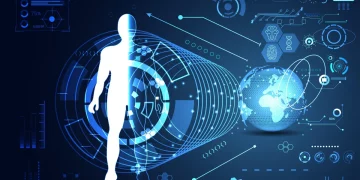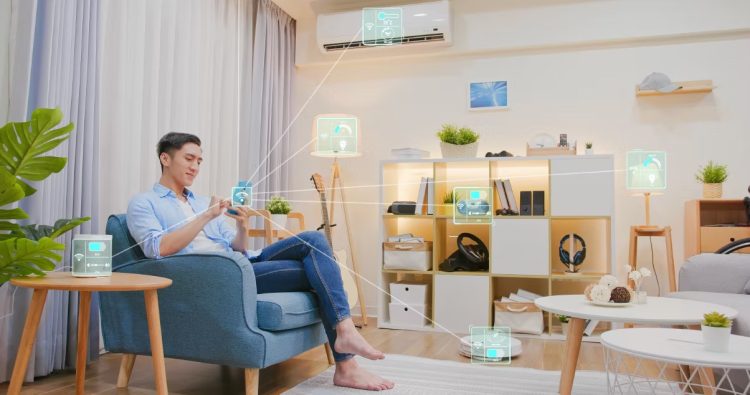The future of living is no longer just about convenience—it’s about smart solutions that make our homes more efficient, secure, and connected. As technology continues to evolve, the once futuristic concept of smart homes has become a present-day reality. From intelligent voice assistants to energy-saving IoT appliances, the possibilities for transforming your home into a tech-savvy haven in 2025 are vast and exciting. In this article, we’ll explore ten key ways to smartify your home, giving you a glimpse of what the future of living will look like.
Introduction: The Rise of Smart Homes
The concept of smart homes has evolved dramatically over the last decade, driven by advancements in the Internet of Things (IoT), artificial intelligence (AI), and other emerging technologies. While smart homes once seemed like something out of science fiction, today they are becoming an integral part of daily life. According to a 2023 survey by Statista, the number of smart homes globally is expected to surpass 400 million by 2025, signaling a clear shift in how we interact with the spaces we live in.
Smart homes offer convenience, security, energy efficiency, and entertainment in ways that were unimaginable just a few years ago. The integration of devices such as smart thermostats, voice-controlled assistants, and security cameras means that you can control nearly every aspect of your home with just a tap on your phone or a simple voice command.
As we look toward 2025, the smart home ecosystem will only grow more interconnected and user-friendly. Let’s take a closer look at some of the most important ways to “smartify” your home in the near future.
Voice Assistants: The Heart of a Connected Home
In many ways, voice assistants are the cornerstone of the modern smart home. These AI-powered devices, such as Amazon’s Alexa, Google Assistant, and Apple’s Siri, serve as the central hub through which many other smart home devices are controlled. Whether it’s adjusting the lighting, playing your favorite music, or setting the thermostat to your preferred temperature, voice assistants make home automation seamless and intuitive.
One of the most significant innovations in voice assistant technology in 2025 will be the increased level of personalization and adaptability. Voice assistants will be able to recognize the voices of different family members, allowing each person to receive personalized responses and actions. For instance, your assistant might play your favorite morning podcast when you say “good morning,” while your spouse could be greeted with a custom weather update or traffic report.
Furthermore, the integration of AI and machine learning into voice assistants will make them more intelligent and capable of anticipating your needs. For example, your voice assistant could learn your daily routines, adjusting lighting and heating automatically based on the time of day or even your mood. This level of automation can make your home feel like a personalized space that adapts to your lifestyle.
Smart Lighting: Enhancing Ambiance with Automation
Lighting plays a crucial role in setting the mood and ambiance in any home, and in 2025, smart lighting systems will allow homeowners to control their lighting in more dynamic and energy-efficient ways than ever before. Imagine walking into your home, and the lights automatically turn on to your preferred brightness level. Or perhaps your lights will change color based on the time of day, mimicking natural sunlight patterns to improve your circadian rhythm.
Smart lighting goes beyond mere convenience; it also enhances energy efficiency. With connected light bulbs, you can set schedules and control lights remotely, ensuring that lights are only on when needed. Motion sensors can automatically turn off lights when a room is unoccupied, further saving on energy bills.
In addition to functional benefits, smart lighting also integrates with other home automation systems, allowing you to synchronize lighting with music, TV shows, or even movie nights. For instance, if you’re hosting a party, you can program your lights to flash in time with your playlist, adding an extra layer of excitement to the atmosphere.
Smart Security Systems: Keeping Your Home Safe with Tech
Security is one of the primary concerns for homeowners, and fortunately, smart technology is revolutionizing how we keep our homes safe. Traditional alarm systems have been replaced by sophisticated smart security solutions that provide real-time monitoring and remote control, offering homeowners peace of mind whether they are at home or away.
In 2025, expect smart security systems to become even more advanced, with features like AI-powered surveillance cameras that can recognize faces and differentiate between humans, animals, and objects. These cameras will be able to send real-time alerts to your smartphone, allowing you to quickly assess the situation and take action if necessary. Some cameras may even integrate with local law enforcement, automatically notifying authorities if a break-in is detected.
Smart locks are another key component of home security. These digital locks can be controlled via smartphone apps, allowing you to lock or unlock your doors remotely. They can also be programmed to grant temporary access to guests, cleaners, or delivery personnel, giving you greater control over who enters your home.

IoT Appliances: Simplifying Daily Chores with Connected Devices
The Internet of Things (IoT) has brought us an entirely new class of appliances designed to make everyday tasks more efficient. In 2025, we’ll see even more integration of IoT devices in the home, helping to automate and streamline daily chores.
Smart refrigerators, for instance, can monitor your food supply and create shopping lists based on what’s running low. Some even have cameras inside that let you check the contents remotely via an app, saving you a trip to the store to check if you’re out of milk. IoT-connected washing machines and dryers will allow you to start and monitor laundry cycles from your phone, while smart dishwashers can notify you when the cycle is complete.
Other IoT appliances, such as smart ovens and coffee makers, will be able to learn your preferences and make adjustments automatically. Want your coffee brewed at 6:30 AM every morning? A smart coffee maker can ensure it’s ready when you wake up. Similarly, your oven could preheat to the desired temperature before you even get home from work, making cooking quicker and more efficient.
Entertainment Tech: Upgrading Your Home Theater with Smart Gadgets
The future of home entertainment will be shaped by cutting-edge technology, and in 2025, your home theater will be more advanced than ever. From immersive 4K and 8K televisions to AI-powered sound systems, smart entertainment tech will deliver an unparalleled viewing and listening experience.
Smart TVs will be at the center of home entertainment, offering seamless integration with streaming platforms, smart home devices, and voice assistants. Imagine saying, “Play my favorite show” and having the TV automatically adjust the picture settings based on ambient light, while your sound system kicks in with the perfect audio mix.
In addition to advanced TVs and sound systems, augmented reality (AR) and virtual reality (VR) will make their way into the living room. With the help of VR headsets, you’ll be able to step into a virtual world, experiencing movies and games in a completely immersive way. Similarly, AR glasses and screens will allow you to overlay digital elements into your physical space, turning your living room into an interactive environment.
Energy Efficiency: How to Save Energy and Money with Smart Solutions
One of the most significant benefits of smart home technology is the ability to save energy and reduce utility costs. With smart thermostats, for example, you can program your heating and cooling systems to run only when needed, cutting down on energy waste.
Smart thermostats like Google Nest and Ecobee can learn your schedule and adjust temperature settings based on when you’re home, asleep, or away. In 2025, these systems will become even more intelligent, with the ability to analyze your home’s energy usage patterns and suggest ways to optimize efficiency.
Smart plugs and outlets will also help you manage energy consumption. These devices allow you to monitor how much energy each appliance is using and turn off devices that are drawing unnecessary power. In addition to saving energy, this can also help extend the lifespan of your electronics by ensuring they aren’t running when not in use.
Conclusion: Future Trends in Smart Homes
As we look toward the future, it’s clear that smart homes will continue to evolve and become even more integral to our daily lives. In 2025, we can expect further advancements in AI, IoT, and automation, leading to more personalized, intuitive, and energy-efficient living spaces.
From voice assistants and smart lighting to AI-powered security systems and IoT appliances, the opportunities to enhance your home with technology are limitless. As these innovations become more accessible and affordable, creating a tech-savvy home will be easier than ever before. By embracing these advancements, you’ll be able to live more efficiently, securely, and comfortably, ensuring that your home remains at the cutting edge of innovation.


















































Discussion about this post